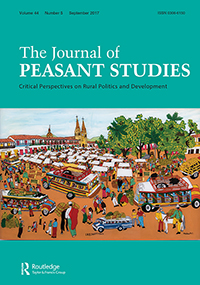Environmentalist organizations promote co-management arrangements as a means of protecting forests and moving away from predatory forms of Indigenous-settler interactions. In Peru, the state and Indigenous Peoples co-manage territories under three regimes: Native Communities, Communal Reserves, and Reserves for Isolated Indigenous Peoples. Through the case of the Purús-Manu Conservation Corridor, we show how in co-management arrangements Indigenous Peoples play dual roles as resource managers (and makers) and as resources themselves, and how in this process indigeneity emerges as a resource. As a result, Indigenous Peoples find that paradoxically, co-management schemes reproduce many of the power asymmetries of previous interventions.
DOI:
https://doi.org/10.1080/03066150.2024.2374734
Dimensions Citation Count:






















